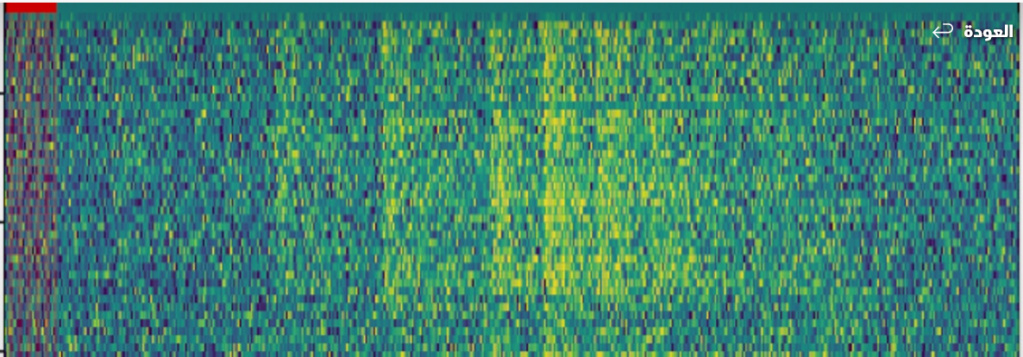Strange “heartbeat” signals detected from a distant galaxy

Astronomers at the Massachusetts Institute of Technology in the United States have detected a strange, persistent radio signal from a distant galaxy with surprising regularity.
The signal is classified as a "fast radio burst", a very strong burst of radio waves of unknown astrophysical origin, typically lasting for a few milliseconds at most.
However, this new signal lasts for up to 3 seconds, about 1,000 times longer than the average fast radio burst.
According to a study published on Wednesday in the journal Nature , The team discovered that these radio waves repeat every 0.2 seconds in a distinct periodic pattern, similar to a heartbeat.
The researchers named the signal "FRB 20191221A", and it currently ranks as one of the longest-lived radio waves, with the clearest periodic pattern detected to date.
The source of the signal is in a distant galaxy, several billion light-years from Earth.
The source of that signal remains a mystery, although astronomers suspect that the signal could be emitted by a radio pulsar or magnetar, both types of neutron stars with extremely dense cores and tremendous rotation speed.
"There aren't many things in the universe that emit regular periodic signals like this one," says postdoctoral researcher at MIT 's Kavli Institute for Astrophysics and Space Research, Danielle Mitchell.
He added, "Among the examples that we know in our galaxy are: radio and magnetic pulsars, which rotate and produce a beam similar to a lighthouse. We believe that this new signal could be a magnetar or a pulsar."

The team hopes to discover more periodic signals from this source, which can then be used as an astrophysical clock. For example, the frequency of the bursts and how they change as the source moves away from Earth can be used to measure the expansion rate of the universe.
Fast radio bursts were first discovered in 2007, and since then scientists have been able to identify hundreds of similar radio flashes across the universe, most recently by the Canadian Hydrogen Density Mapping Experiment using the Chamini telescope.
This telescope constantly monitors the sky as the Earth rotates, and is designed to capture radio waves emitted by hydrogen in the very early stages of the universe.
The telescope also contains fast radio burst (FRB) sensors, and since he began observing the sky in 2018, Chamini has detected hundreds of fast radio bursts emanating from different parts of the sky.
But the vast majority of those bursts observed so far are one-off, and can be likened to ultra-bright bursts of radio waves that last for a few milliseconds before they flash.
Researchers recently discovered the first periodic fast radio bursts that appear to emit a regular pattern of radio waves.
These devices receive the signal for 4 days, and consist of random bursts that are then repeated every 16 days.
This 16-day cycle indicated a cyclical pattern of activity, although the actual radio burst signal was random rather than periodic.

On December 21, 2019, Chamini picked up one of these possible fast radio waves, which immediately caught the attention of Micheli, who was examining data from the observatory.
"It was unusual," he recalls. "[The signal] was not very long, it lasted about 3 seconds, but there were remarkably accurate periodic peaks, emitting every millisecond (boom-boom-boom) just like a heartbeat. This This is the first time that the same signal has been periodic."
In analyzing the radio burst pattern of these bursts, Micheli and colleagues found similarities with emissions from radio and magnetic pulsars in our galaxy.
Radio pulsars are neutron stars that emit beams of radio waves and appear to pulsate as the star rotates, while magnetars produce similar emission due to their intense magnetic fields.
The main difference between the new signal and radio emissions from pulsars and magnetospheres in the galaxy is that the newly discovered fast radio bursts appear to be from a source a million times brighter.
These bright flashes may originate from a distant radio pulsar or magnetar that is usually less bright as it rotates, and for some unknown reason unleashes a train of bright explosions, in a rare 3-second window, Micheli says.
This discovery raises the question of what could have caused the formation of this strange signal.
https://asharq.com/ar/3GFB6hxDr6prv8NmtisUIz-%D8%B1%D8%B5%D8%AF-%D8%A5%D8%B4%D8%A7%D8%B1%D8%A7%D8%AA-%D8%BA%D8%B1%D9%8A%D8%A8%D8%A9-%D8%AA%D9%8F%D8%B4%D8%A8%D9%87-%D9%86%D8%A8%D8%B6%D8%A7%D8%AA-%D8%A7%D9%84%D9%82%D9%84%D8%A8-%D9%85%D9%86/?fbclid=IwAR0BdnONFhdC07WfTpU5_2tvqW2deaC6oBzuUz3epKI5LutbEs6brHnxLJw

